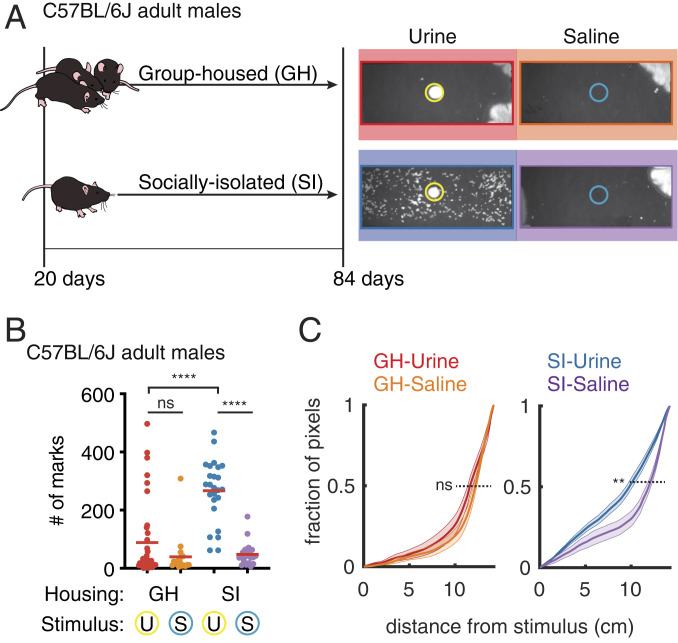Fig. 1.
Social isolation reveals an innate form of context-dependent TCM. (A, Left) Housing schematics for group-housed (GH) and socially isolated (SI) mice. (Right) Representative micturition patterns revealed 1 h after GH or SI animals were placed in a test chamber with saline (blue circle) or a nonself urine (yellow circle) stimulus. (B) Number of urine marks deposited in 1 h for each experimental condition (U, urine exposed; S, saline exposed; n = 36 mice for GH urine, n = 18 mice for GH saline, n = 25 mice for SI urine, n = 23 mice for SI saline. ****P < 0.0001; ns, not significant; two-tailed Mann–Whitney U test; not adjusted for multiple comparisons). (C) Cumulative probability distribution of distances of urine-marked pixels from the stimulus center for the four contexts with mean (solid lines) and SEM (shaded areas). **P < 0.01; ns, not significant; simulation by bootstrap analysis).

